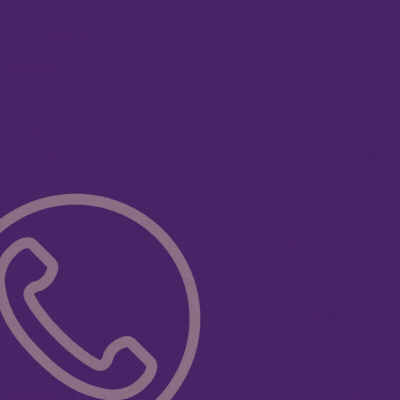Dvar Torah For Parshas Balak
How is this year different than other years? Every year, after the fast – we eat. This year (if ch’v Moshiach is delayed), after eating we will fast! Every year, after the fast, we drink water, coffee or juice. This year, after the fast we will say l’chaim on wine (for havdala). The special k’vius of this year and it’s connection to Moshiach • Full Article
THE FAST TRACK TO TRANSFORMING FAST DAYS INTO HOLIDAYS
COMMENCE WITH A CONUNDRUM
How is this year different than other years?
Every year, after the fast – we eat.
This year (if ch’v Moshiach is delayed), after eating we will fast!
Every year, after the fast, we drink water, coffee or juice.
This year, after the fast we will say l’chaim on wine (for havdala).
FAST FOOD DAY
It’s not every year that we get (not) to fast on the 17th of Tammuz, but this year, according to all opinions, Ashkenazim and Sefardim, Litvish and Chassidish, will sit down to a satisfying meal on Shabbos, parshas Balak which falls out on the 17th of Tammuz.
Chassidus teaches us (based on the holy Shelah) that there is a direct connection between the holidays and the parshiyos. What is the connection here? Where is the 17th of Tammuz hinted at in the parsha? And where is the cancellation of the fast hinted at in the parsha?
In order to see the connection between eating on Shabbos on a fast day and parshas Balak, we will first need the Torah’s perspective on postponing and canceling a fast on Shabbos.
In an amazing sicha that was said in a year where it fell out as it does this year, parshas Balak 5751, the Rebbe explains at length that there are two ways to look at the postponement of the fast when it falls out in this way.
1-Shabbos postpones the fast. The sources say there is no sadness on Shabbos. Shabbos is a day of joy and pleasure and therefore, the holiness of Shabbos, which is from the Torah, postpones the fast which is a rabbinic prohibition.
2-A deeper way of looking at it is that Shabbos (not only postpones but) cancels the very existence of the fast day. It’s not just that Shabbos is “stronger” and it pushes aside a “weaker” prohibition. Rather, the Torah and the Rabbanan never prohibited eating. Shabbos does not postpone the fast because it simply does not exist. Consequently, there is nothing to postpone! Furthermore, the holiness of Shabbos is so great that it turns the day into a Yom Tov, a joyous day of eating, drinking and delight.
We find a similar way of looking at the abrogation of fast days in the era of the Geula. The fast days in the Geula will not only be postponed, will not only be canceled, they will become, as the verse says (Zecharia 8:19), “The fast of the fourth and the fast of the fifth and the fast of the seventh and the fast of the tenth will be for the House of Yehuda gladness and joy and for happy holidays, but love truth and peace.”
FEASTING NOT FASTING
This Chassidic outlook leads us to an interesting halachic chiddush. Since Shabbos turns the fast day into a day of joy, not only is it permissible to eat and drink but it’s a mitzva to do so more than other Shabbosos of the year because, after all, the joy and pleasure that are expressed in “fatty meat, large fish, and old wine” need to be doubled and redoubled! Eating because of Shabbos and eating because … of the fast day!
[They say that in certain groups, every additional event that falls out on Shabbos necessitates an additional cooked dish. Taking out two Sifrei Torah is translated into two kugels or fish. When Yom Tov falls out on Shabbos, we need (at least) two types of meat … and one cannot imagine the Shabbos Chosson or Kalla without two types of cakes or desserts, at least.]
Thus, this Shabbos we have a double reason to rejoice, the joy of Shabbos and the joy of (the cancellation of) the fast!
The Rebbe adds that the pleasure taken on this Shabbos by eating “large fish and fatty meat and old wine” alludes to the meal we are all waiting for … the meal of the Livyasan, the Shor HaBor, and the preserved wine in the future Geula!
So where is all this hinted at in the parsha?
One of the highlights of Balak is the prophecy of the wicked Bilaam about the coming of Moshiach. “A star shall shoot forth from Yaakov and a staff will arise from Israel,” a prophecy that over the passage of time became one of the textual, halachic sources that Rambam quotes when he says, “One who denies him [Moshiach] or does not await his coming, denies the Torah and Moshe Rabbeinu, for the Torah (in parshas Balak) testifies to him.”
How appropriate is it for the halachic source of the coming of Moshiach to be a prophecy of a wicked, idolatrous goy who incited the Jews to immorality?!
This is the point though, to transform and change things, not merely to postpone the evil or get rid of it. It needs to be changed from within and turned into something positive and good. The transformation of Bilaam’s curses into endless blessings in the era of Geula represents the transformation of the depths of evil and impurity into the utmost good and the pinnacle of holiness. It symbolizes both the transformation of the saddest days in the Jewish calendar into the most joyous days in Jewish history; the transformation of fast days for the destruction of the Beis HaMikdash and the start of the bitter exile, into days of Geula full of joy.
If this is so regarding any time a fast day falls out on Shabbos, when speaking about 17 Tammuz this is all the more true. If you calculate the exact date of the sin of the golden calf, you see that the sin occurred on the 16th of Tammuz. The next day, the first Luchos were broken. In halachic works, this fact is presented as the first reason, chronologically (along with four other reasons that happened later), for the fast of the 17th of Tammuz.
However, when we see how Aharon reacted to these events, we discover something very interesting. Aharon said three words, “Chag l’Hashem machar” (a holiday for G-d tomorrow). The Arizal explains that Aharon saw that in the future, G-d would transform the 17th of Tammuz into a joyous day. “‘Machar’ can mean after some time,” but the day will come and we will all see what Aharon already saw. Aharon saw the evil turned into good, the sin turned into a mitzva, the impurity that become the ultimate in holiness, and all this is hinted at in the 17th of Tammuz!
Aside from turning the bitter into sweet, the bad into good, within time, we need to turn bad into good in our head. Shabbos changes time; Torah changes our head!
TO CONCLUDE WITH A (LESSON AND THE) STORY (BEHIND THE LESSON)
At that farbrengen, the Rebbe spoke a lot about learning Hilchos Beis HaBechira during the Three Weeks, which needs to start this Shabbos, and learning inyanei Moshiach and Geula. The Rebbe explained that the Torah has the power to change a person’s outlook on life and the real state of the world. With the power of Torah, a Jew can clearly see how we are already standing on the threshold of Geula.
Another point that the Rebbe mentions is that we we see that despite all the signs, proof and evidence around us that we are in the era of the Geula, it is still hard for us to start “living with Moshiach” and “living with the Geula” (es kumt un shver) and the solution is to learn inyanei Moshiach and Geula.
Bachurim who were in 770 say that after the Rebbe’s instruction on Shabbos parashas Tazria-Metzora to learn inyanei Moshiach and Geula, especially publicly, two bachurim started a shiur like this in 770. Every week they would write a detailed report to the Rebbe that included the names of the participants. Sadly, every week, the number of participants shrank. It reached a point where, the week of parshas Balak, there were so few participants that the question was whether to write a report about the shiur.
Anyway, they submitted a report to the Rebbe in which they wrote that it was very hard to get people to learn. They received the Rebbe’s answer at the farbrengen. The Rebbe used the words that they used in the report (es kumt un shver) and announced that the only way to live with the Geula is by learning inyanei Geula!
Good Shabbos!
60
Join ChabadInfo's News Roundup and alerts for the HOTTEST Chabad news and updates!










































